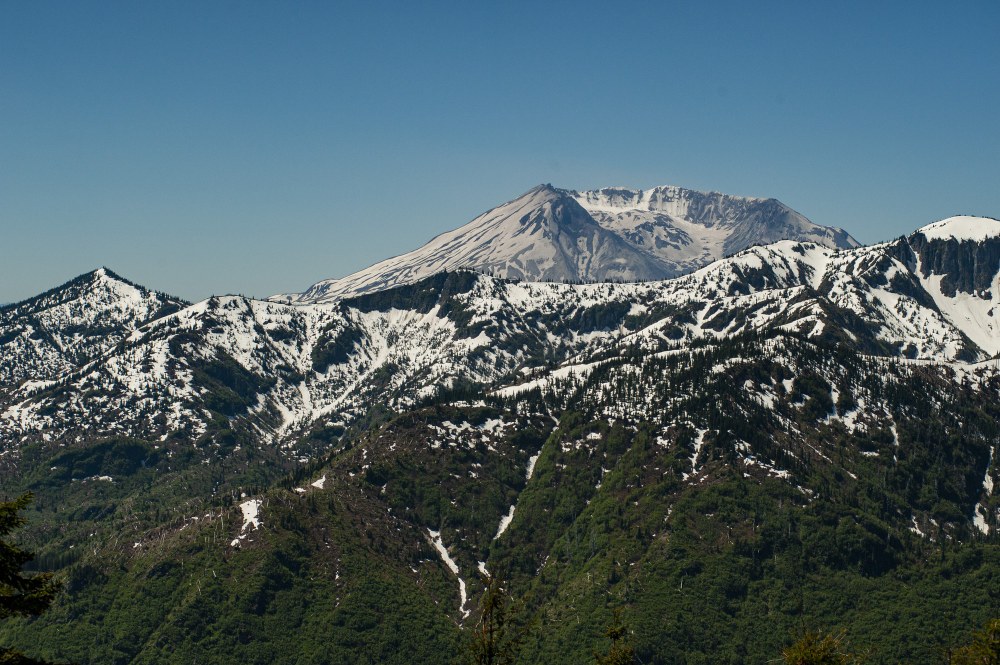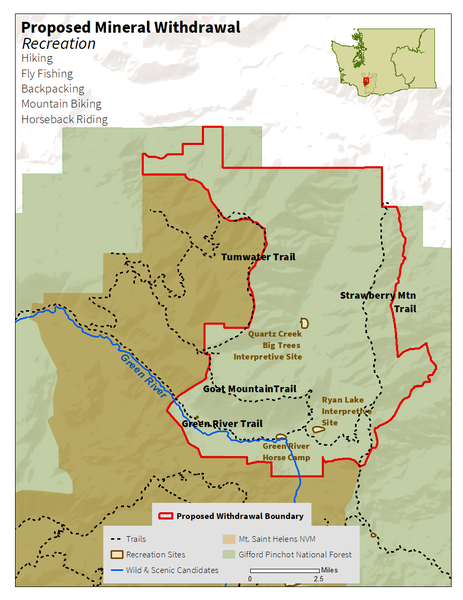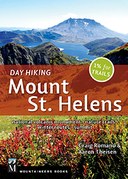
Directly bordering the monument, the upper Green River Valley is an ecologically important landscape beloved for its scenic views and many recreation opportunities. Early versions of the bill to designate Mount St. Helens a national monument included protections for the valley, but those lands were carved out of the final version to protect mining interests. Left unprotected, the valley continues to face the threat of development.
Since 2005, conservationists have worked to protect the Green River Valley from efforts to develop an industrial-scale mine. After several unsuccessful attempts, a Canadian mining company continues to seek exploratory permits to drill for copper and gold in the Goat Mountain area of the valley. Mining in one of our region’s beautiful landscapes would impact the environment, recreation, and economies, and public health of nearby southwest Washington communities.
No Place for a Mine
Developing in this earthquake-prone area, in close proximity to an active volcano, brings an increased risk of accidental mining spills. It would also threaten old-growth forests and the Green River, which provides vital habitat for wild steelhead and drinking water for surrounding communities.
Mount St. Helens and the Green River Valley also have significant historical and cultural value to local Indigenous communities, including the Cowlitz Indian Tribe and the Confederated Tribes and Bands of the Yakama Nation.
Impacting Recreation Near Mount St. Helens
Recreationists come from near and far to enjoy world-class hiking, mountain biking, and many other outdoor activities. A mine in the valley would negatively impact outdoor recreation in several ways.
The proposed mine site includes land that was purchased by the Forest Service using the Land and Water Conservation Fund, for the explicit purpose of supporting conservation and outdoor recreation. With so many competing priorities for federal funding, it’s important that LWCF-funded projects continue to protect land for the benefit of local communities.
The mine’s construction would cut off access to a number of trails such as the Green River Trail, Goat Mountain Trail, and Green River Horse Camp, which are beloved by trail users. Furthermore, noise pollution resulting from development and operation of the mine would disrupt the peace and quiet of this natural and remote landscape.
Advocating for Permanent Protection
Despite successful efforts to protect the valley, the area remains threatened. Along with other Washington recreation and conservation partners, The Mountaineers has signed on as a partner of the Green River Valley Alliance - a growing coalition of tribes, businesses, organizations, policymakers, and individuals working together to protect the Mount St. Helens area from mining for good. The best way to do that is to secure a permanent mineral withdrawal from the Green River Valley.
What is a Mineral Withdrawal?
A mineral withdrawal is a land management tool that prohibits mining activities within the boundaries of a designated area of federal public lands. Securing a mineral withdrawal would not impact recreation, trail maintenance, timber harvesting, or any other activity currently allowed in the valley. While mineral withdrawals can be designated through administrative action by the executive branch, they can also be secured through congressional action.
Thanks to advocacy by the local community, organizations like The Mountaineers, and leadership from Washington’s congressional delegation, we secured a permanent mineral withdrawal for the Methow Valley through the passage of the Methow Headwaters Protection Act in 2019. The lands and waters of the Methow are now permanently protected from industrial-scale mining, a win for local communities and outdoor recreationists alike.
A Mineral Withdrawal for the Green River Valley
The Green River Valley Alliance is pursuing a legislative mineral withdrawal, and it will take an act of Congress to secure these protections. The campaign’s proposed mineral withdrawal boundary is just over 46,000 acres, and was developed by utilizing the original proposed boundaries of the Mount St. Helens National Volcanic Monument and by assessing mining impacts to the entire Quartz Creek watershed. Protecting the Green River Valley through a permanent mineral withdrawal by Congress will likely take years. A robust coalition of supporters will be key to our success, and the outdoor recreation community will be critical to moving lawmakers to safeguard the valley for future generations.

image of proposed mineral withdrawal area in the Green River Valley.
Take Action
Add your support for a permanent mineral withdrawal around Mount St. Helens area by signing the Green River Valley campaign’s petition. Signatures will be delivered to Rep. Marie Gluesenkamp Perez of Washington’s third congressional district and U.S. Senators Patty Murray and Maria Cantwell.
While Rep. Gluesenkamp Perez is supporter of outdoor recreation, she especially needs to hear from her constituents about the importance of protecting the Green River Valley and the greater Mount St. Helens area. Recreationists outside of southwest Washington are also encouraged to sign the petition. Senators Murray and Cantwell championed the Methow Headwaters Protection Act, and their support will be crucial to this campaign’s success.
If you haven’t had the chance to visit Mount St. Helens, we encourage you to grab a copy of Day Hiking Mount St. Helens from Mountaineers Books and hit the trail. See for yourself why the Green River Valley is worth protecting.
 The Mountaineers
The Mountaineers
